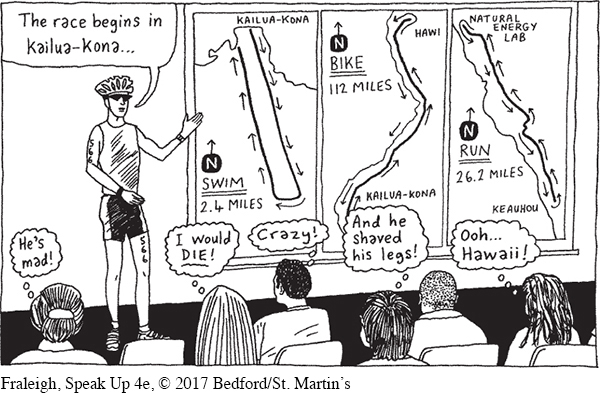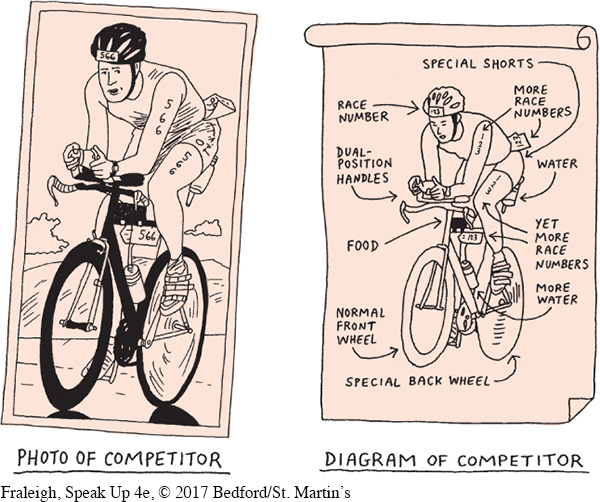Visual Images
As the old saying goes, a picture can be worth a thousand words. When giving a speech, you sometimes can save time and improve clarity by presenting a simple visual representation rather than describing something. If you are explaining the layout of a room, for example, showing audience members a scale drawing will provide them with a clearer image than verbally describing the room’s dimensions. Several types of visual aids can give your audience a clearer image of what you are talking about, including maps, photographs and drawings, and diagrams.
Maps. A map is a visual representation of geography and can contain as much or as little information as you wish. In addition to the map itself, you can add highlighting or labels to make the map more useful to your audience. For example, if you’re giving a talk on the architecture of a particular city, you could show a map with labels for the city’s most important buildings. In a presentation about competing in the Ironman triathlon in Hawaii, a speaker could use a map to show the route traveled for the race.

Page 410
Photographs and Drawings. Photographs can help you provide an exact depiction. For example, if you’re giving a speech about the Mona Lisa, you could display a photograph of the painting and point out certain aspects of Leonardo da Vinci’s technique. Drawings enable you to emphasize certain details about your topic. For instance, in a speech about how mosquitoes spread malaria, you could display a drawing of the insect that shows how its proboscis is the tool for spreading disease. As with maps, you can add labels or other types of highlighting to a photograph or drawing to focus your audience’s attention on specific details.
Diagrams. If you are explaining how something works or describing its parts, a diagram can be helpful. A diagram is a drawing that details an object or action and the relationships among its parts. Diagrams can be drawn by hand or rendered on computers, and they typically include visual images, labels, and other important information. Coaches routinely diagram plays to convey strategy to their players. You also might use an annotated diagram to provide instructions or point out the elements of something, such as bicycle equipment.
Page 411
